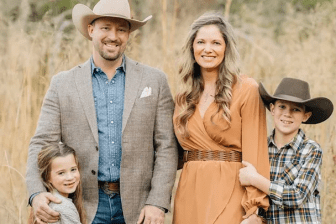When the report entitled “Paige’s Story” came out last May, it galvanized a province — a story so profoundly depressing you can’t read it without flinching. Seventy-five pages that detail the deeply-troubled life, and inevitable death, of a British Columbia woman identified only by her first name: Paige.

The document is infused with anger. There’s also an undertone of disbelief: How could this possibly happen here? A sense of outrage begins with the subtitle— “Abuse, Indifference and a Young Life Discarded”—and carries through until the final sentence: “Change will never truly come if indifference remains the standard of care.”
The information was gathered over 10 months by a group of people reporting to Mary Ellen Turpel-Lafond, B.C.’s Representative for Children and Youth. Time and time again, the reader wonders: Is this hyperbole? Here’s Paige, reportedly molested by her grandmother’s boyfriend. Here’s Paige, smuggled into a notorious Vancouver hotel in a suitcase so she can be with her cocaine-addicted mother. Here’s Paige, found unconsciousness and incoherent in the street at least 17 times. Here’s Paige, passed from one social worker to another at a rate of almost one a year.
It was life as a train wreck, and it could only end one way: dead of an overdose at 19, in the communal washroom of a women’s shelter. In the language of the child protection system, Paige had “aged out”—no longer a child, she now had to fend for herself. She died anonymously: her mother would spend the next 18 months wandering the streets of Vancouver’s Downtown Eastside, asking people: “Have you seen my Paige?” unwilling to accept her daughter’s death. Then the mother, too, would die of an overdose.
- Canadian man dies during Texas Ironman event. His widow wants answers as to why
- ‘Shock and disbelief’ after Manitoba school trustee’s Indigenous comments
- Several baby products have been recalled by Health Canada. Here’s the list
- ‘Sciatica was gone’: hospital performs robot-assisted spinal surgery in Canadian first
As I read Paige’s Story, something bothered me. There was no family name. Even though the report was anecdote-rich, and even though its cover bore three photographs of her, Paige remained semi-anonymous. The more I read, the more I wanted to know her name, to talk to friends and family. I thought she deserved a fuller identity—the validation of a real life, a recognition that even though she lived on the margins, she was still a member of our community.
It took a little detective work. The report told me little of her family background—only that her father abandoned her, and that Paige’s mother was 16 when she gave birth to her, in 1993. That would put mom’s birth year at around 1977.
On Page 16 of Turpel-Lafond’s report, it says that in 2006, a photograph of Paige’s mother appeared on a police wanted list in a Kamloops newspaper. I spent an afternoon hunting through newspaper archives, and came across a Crimestoppers column in the now defunct Kamloops Daily News. It showed the photographs of four wanted women.
One of them was Shundah Elizabeth Gauchier, born March 30, 1977. Five feet, seven inches tall. Brown hair. Wanted for extortion. There was a faint facial resemblance to Paige as a teenager.
So I had a possible name. What to do with it? The online White Pages were no help. Then I recalled that when Turpel-Lafond’s report was released, a local aboriginal group had hosted a press conference to comment on the circumstances of Paige’s death. It made sense that if there were any family members in the Vancouver area, they might have attended.
And that led me to Lorne Page and Frances Robson, an aunt and uncle of Paige’s in Vancouver. They had made an unsuccessful bid to be named as her caretakers when Paige was 18. Frances and Lorne welcomed me in when I knocked on their door, and confirmed that Shundah was indeed Paige’s mother.
They put me in touch with other family members, who helped fill the gaps in Paige’s life story. I met a girlfriend of Paige’s who told me over coffee that Paige was very unhappy with the quality of care she was getting from her social workers, and that because of her poor health (she had a weak heart), “she never expected to reach the age of 20.” (Paige died days before her 20th birthday.)
I learned that Paige disliked her name, and gave herself the nickname Nemo. A friend told me it was a joking reference to the fact that she “drank like a fish.” Frances Robson said that wasn’t right—that the nickname Nemo was an allusion to the fact that Paige, like the fish in the Disney movie, was continually trying to find her way home.
I learned that Paige had briefly attended a Vancouver school where a group of aboriginal students had reportedly discussed the formation of a suicide pact—an idea put to rest only after a last-minute intervention.
I learned that Paige was uncommonly bright, and that had she completed high school, she could easily have attended university on a scholarship. But caring for her wayward mother was a constant preoccupation, and made it almost impossible for her to escape the streets. “It was as if Paige was the mother,” Frances told me, “and Shundah was the child.”
What I learned about Paige did nothing to mitigate the awful circumstances of her life. But it made her more real. More than the stereotypical street kid. More than just a grim story with a lot of unhappy anecdotes attached.
She was Paige Gauchier, known as Nemo G. She had a voice and a personality. She had a past, and a future that was taken from her. It deepened the story for me, and made it unforgettable.
16×9’s “A Life Discarded” airs this Saturday at 7 p.m.



Comments